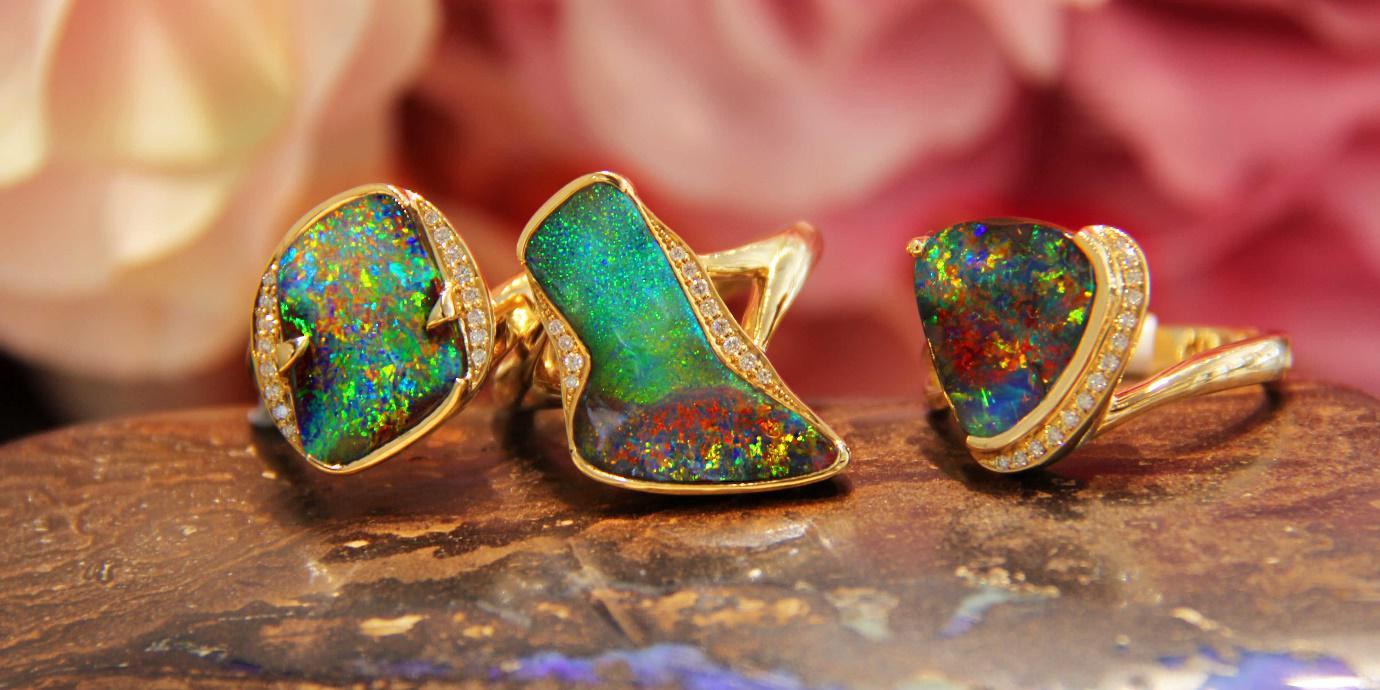What to Look Out for When Buying Opals
- Written by News Company

There’s no doubt that opals are beautiful – these stones, prized for their incredible array of colours, look amazing in a variety of forms, whether it be for jewellery or simply to put on show. Opals are formed in a very unique and interesting way – over very long periods of time after water runs down through the earth, silica is picked up and falls into cracks, after which the water evaporates and pure silica remains. These are the foundations of opals! Although they all follow the same basic process of creation, opals can vary wildly in appearance and price, which begs the question: what should you look out for when deciding on an opal? In this article we demonstrate some of the most important factors related to opal identification so you can make the right decision for you.
Opal basics
The simplest way to determine information about an opal is to find out is the carat of the gemstone (its weight) as this is the same unit of measurement used in other gems, such as diamonds. Unlike diamonds, however, opals actually have far more unique properties than other gemstones due to their unique formation. You might have noticed if you were looking for opal jewellery in Melbourne how diverse opals actually are, and the properties of the gem reflect that very much. These include presentation, type, brightness, fire, pattern, and any perceptible imperfections. Specifically, the type of opal can be further sub-classified according to varities of the opal, which are usually tied to how it was formed. These include Black, Black Crystal, Semi Black, Dark Grey, White, Crystal, Light Grey, Jelly, Boulder, and much, much more. These kinds of classifiers are often tied to the “body tone” of opals which can range from colourless, white, and grey to black. The tone of an opal is often the first visual determinant of an opal’s quality and related price, with dark to black opals being generally more desirable than grey or milky-white gems.
The factors that determine an opals worth
Vividness of colours is absolutely one of the most important factors to understand when deciding on an opal, and one many will base a purchase decision off of. With most opals offering vividness of colour in some capacity, they’re usually classified as either subtle, bright, or brilliant. The quality of the opal is often determined by its directionality – this relates to how colour is displayed and arranged when the opal is rotated. In this case, high quality opals will be non-directional, while other will flash from one direction and be clear from another. Similarly, the distribution and depth of the pattern, as well as the amount of ‘fire’ is a good indication of quality – sparse distribution is indicative of a lower quality opal. The fire in this case refers to the dominant hues in an opal. In order of value, the colours considered are red, orange, yellow, green, blue, indigo, violet, so significant amounts of red and orange would lead to a more prized gem.
Finding the opal for you
Although value is attributed to opals depending on these kinds of qualities, if you’re not an opal expert it shouldn’t matter too much. Instead, try and find an opal that appeals to your tastes – perhaps you like lashings of blue and indigo, despite these being less valued. At the end of the day, your taste means everything!

